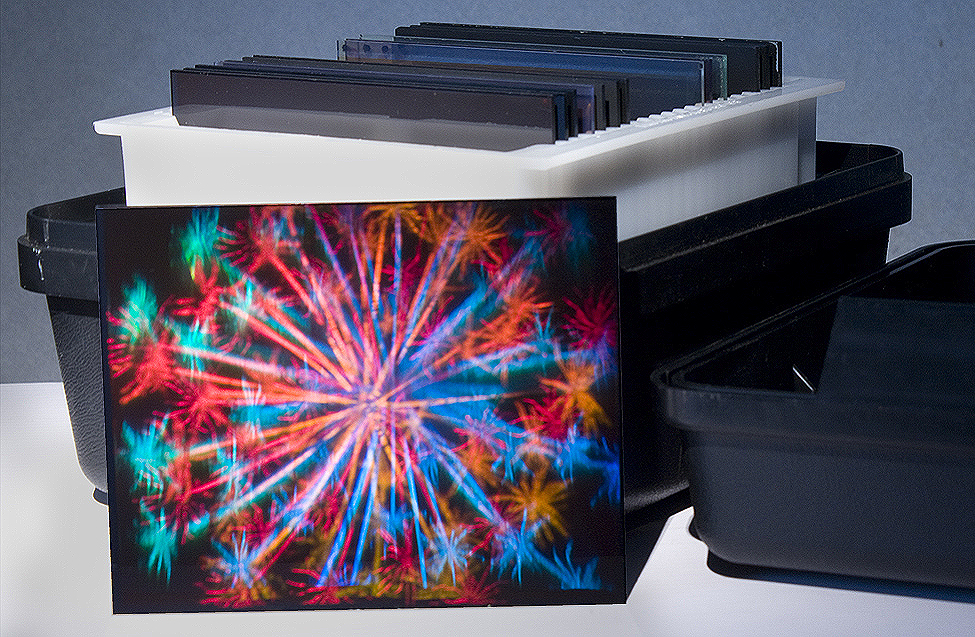

In holographic jargon, 4 by 5's refer to a product in that wonderful time and place in the late 1970's and early 1980's, where holographic galleries galore sold a variety of stock images. Here are a couple of pages the from the Museum of Holography's catalogs from that halcyon age of the early '80's. They were not cheap!
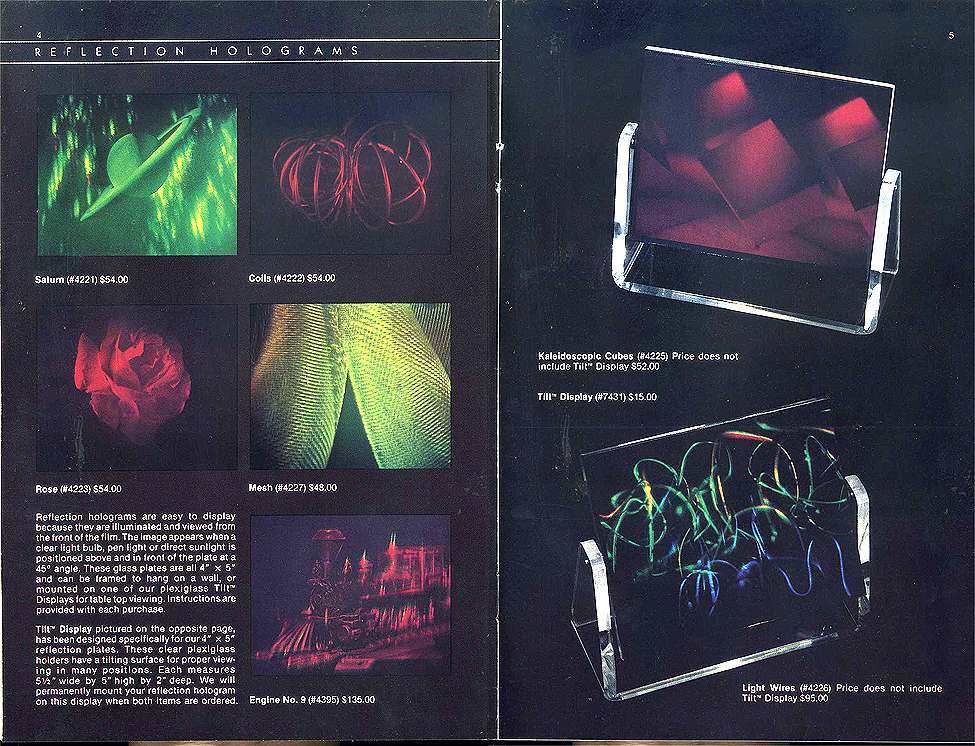
1982 Catalog, pp. 6 & 7
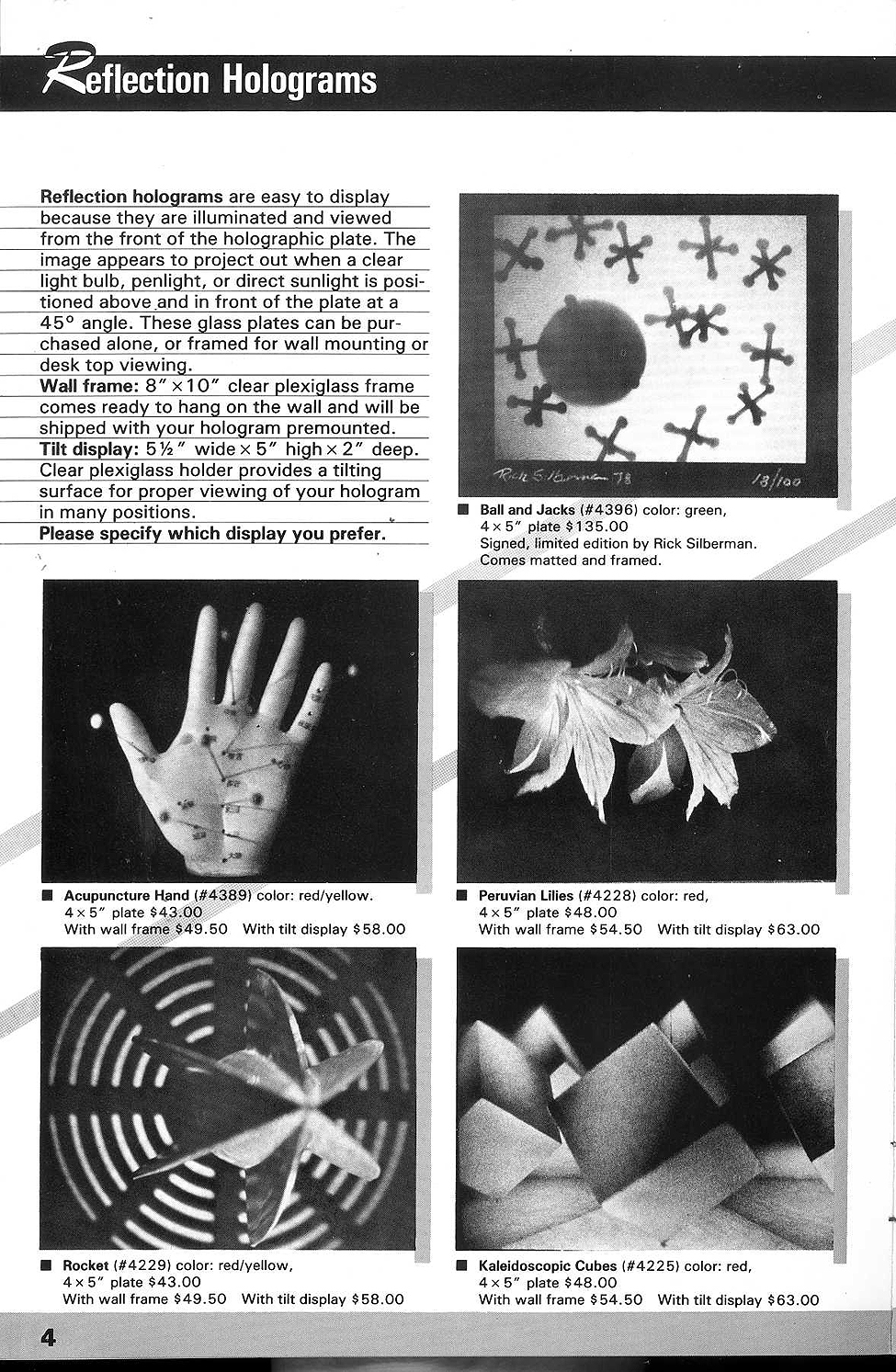
1983 Catalog, p. 4.
Here are the complete catalogs in a higher resolution pdf, 1982 and 1983.
In photographic jargon, the plate size of 4 inches by 5 inches has its roots in the late 19th century, as evidenced by this page the 1892 Kodak Catalogue. (Scanned from a reprint version printed by Wm. B. Becker of the American Museum of Photography.) It became a standard format in the early 20th century due to the popularity of press cameras like the Speed Graflex, etc. It was a popular size as contact prints from these negatives easily fit into a pocket. It spawned a whole family of proportional sizes in papers and films, 8 by 10, and 16 by 20, and these formats, and their metric equivalents, are still popular today.
Here is a gallery of 4 by 5's that have passed through my hands and photographed with a prosumer dSLR, and not scanned in from a book. There are of course many more as evidenced from the catalog pages, but these I have seen and photographeed personally.
4 by 5 inches is also a good plate size for holograms, as they can be handheld which makes it easy for the viewer to tune in the replay angle and viewing zone.
Lon Moore
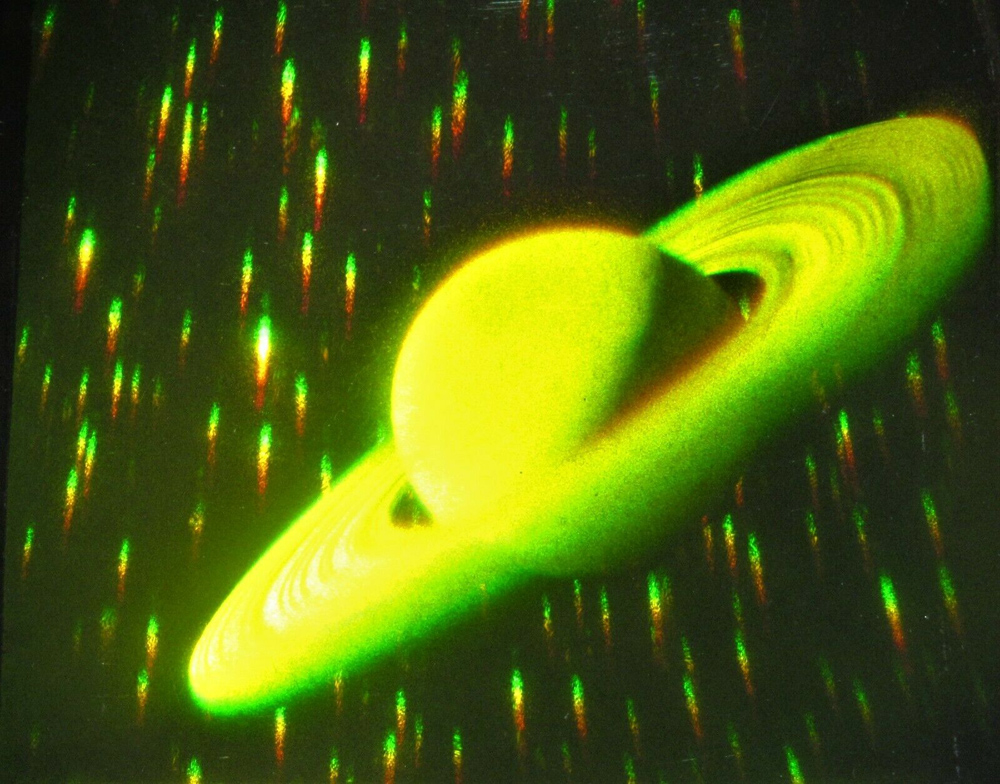
Lon Moore, Saturn, 1977
The best-known practioner of the art was Lon Moore. He told me when I worked at Gallery 1134 in the early 1980's he made $15,000 in one year from the sales of his Saturn (above). I had made $8500 that same year, teaching full-time at a Catholic grade school, so I thought he had hit the big time. Later I sold one of these jawbreakers with a ring and crumpled aluminum background to twinkle as stars to a gentleman who clained Saturn was his home planet, which as well was the name of his record company, the late, great, Sun Ra. Here's a pic I took of the man working his Spacemaster Organ at the very concert I sold him the holo!
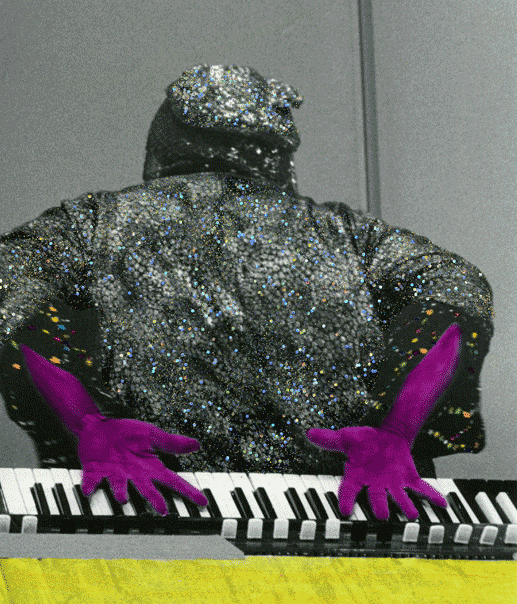
Ed Wesly Sun Ra, 1979
Lon's imagery set a high bar for the 4 X 5 market; here's a nice holographic image play, a bunch of Nails looking like they are puncturing the holographic plate!

Lon Moore, Nails, 1980
Lon was a pioneer of the multi-color reflection hologram technique known as TEA-ing, (short for TriEthanolAmine-ing), where multiple colors can be conjured up using a single laser rather than using many different colored lasers to record and reconstruct a reflection hologram in more than one color, by using chemical tricks in the darkroom. One of his creations, Still Life, which featured a red apple, green pepper and an orange pear was the talk of the First Exhibition at the 1st ISDH at LFC in 1982. He cropped the imagery down to fit into a 4" by 5" plate for mass consumption.
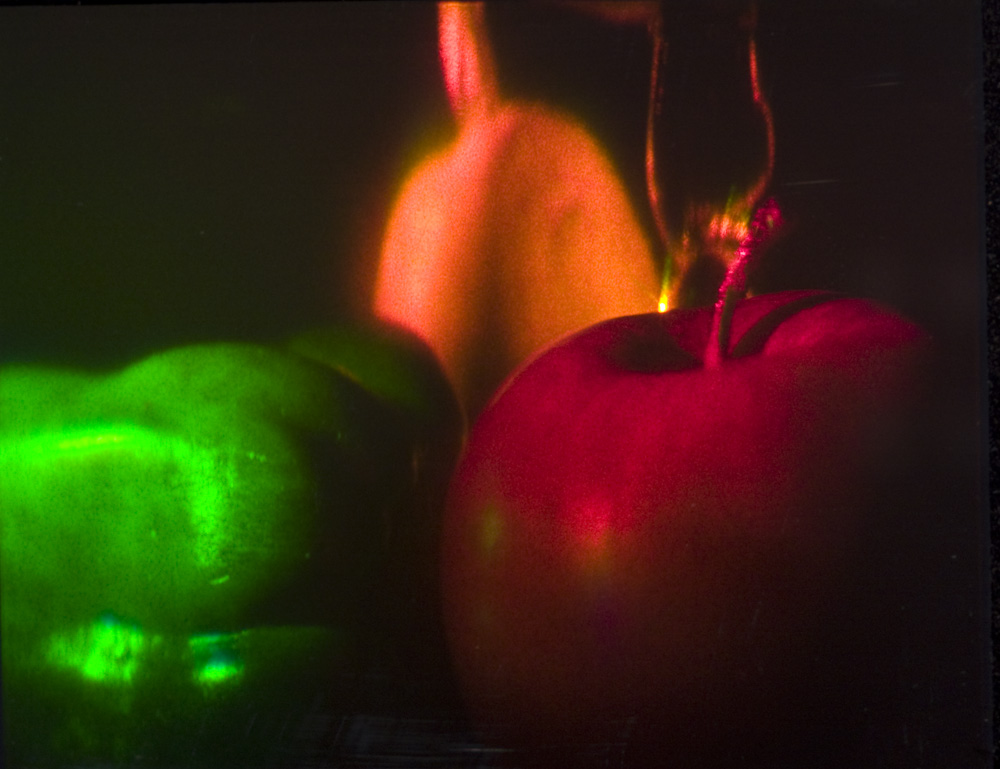
Lon Moore, Still Life, 1984
But perhaps where holography can shine better is in abstraction, and Lon provides us with reflections off of wire (or is it guitar strings) in Squiggles,
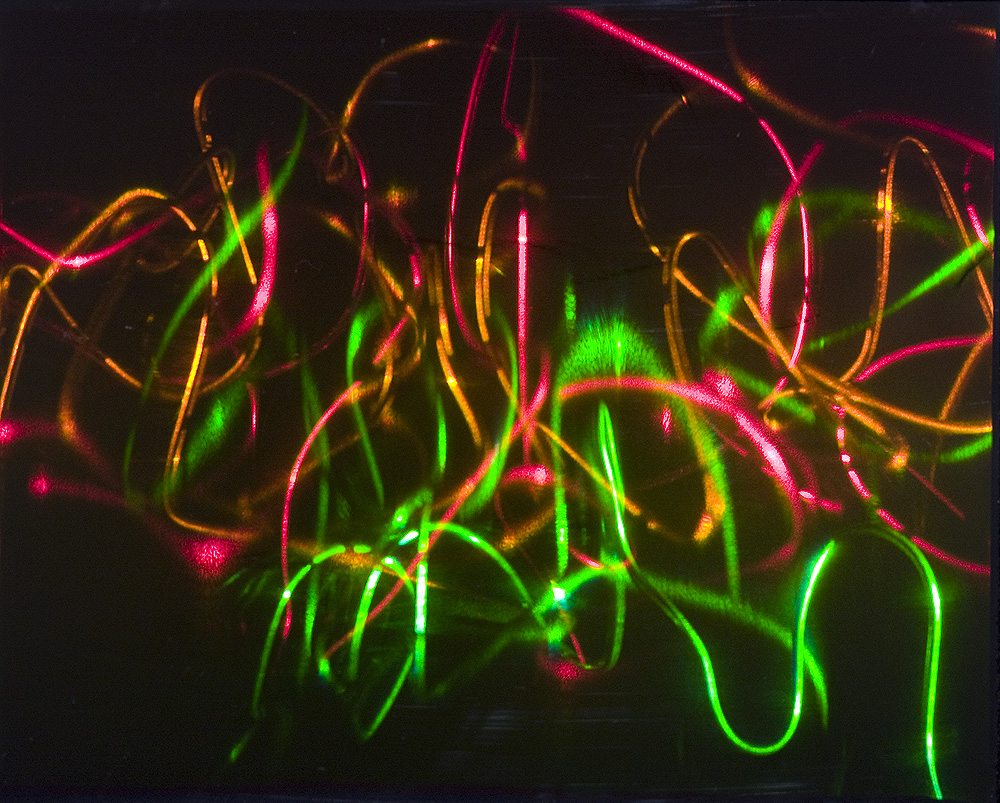
Lon Moore, Squiggles, 1984
or Starburst:
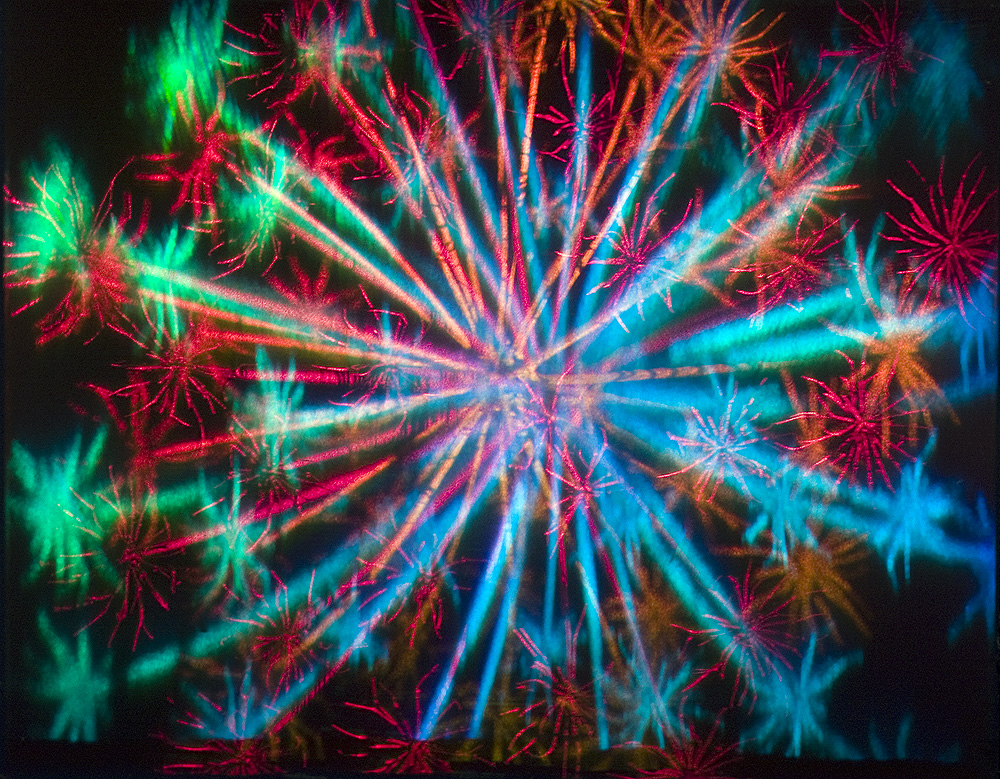
Lon Moore, Starburst, 1984
More from The Bay Area:
Other West Coast holographers like John Kaufman or Randy James got into the act, as there was a ready venue to sell those wares at The Holos Gallery. Below are John's Split Rock, a single color version of his mult-colored 8 by 10, followed by an Acupuncture Hand.

John Kaufman, Split Rock, 1985
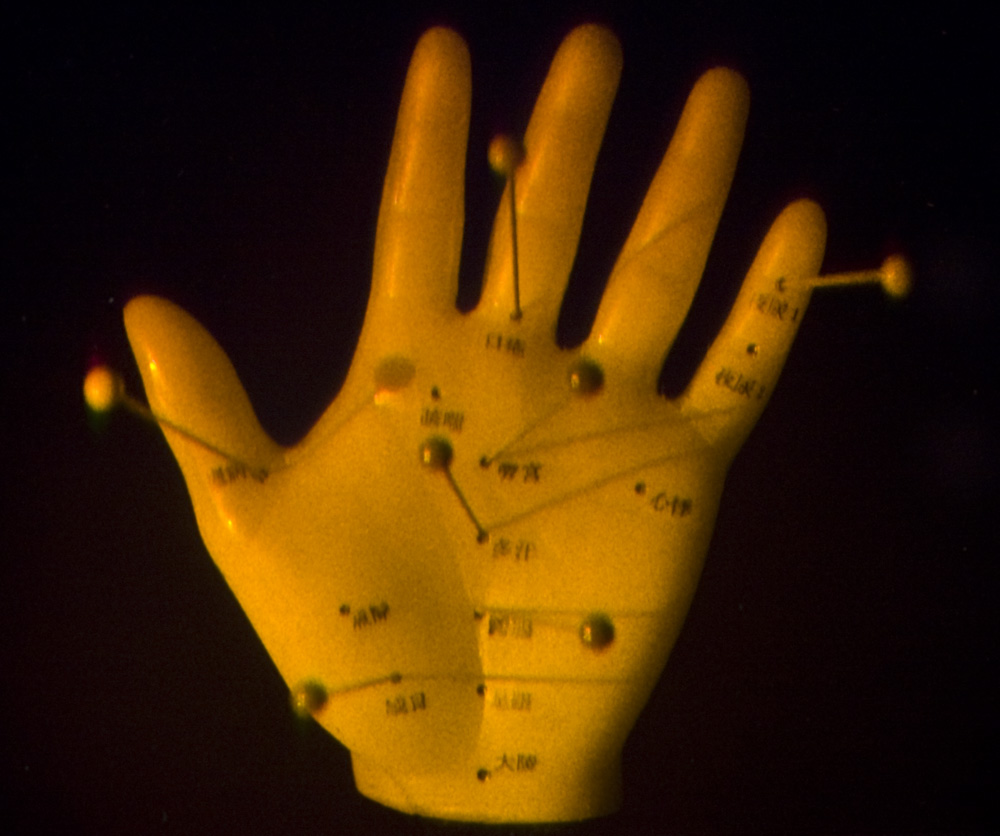
A nice 2 color bit from Randy James, Key in Search of a Hole:
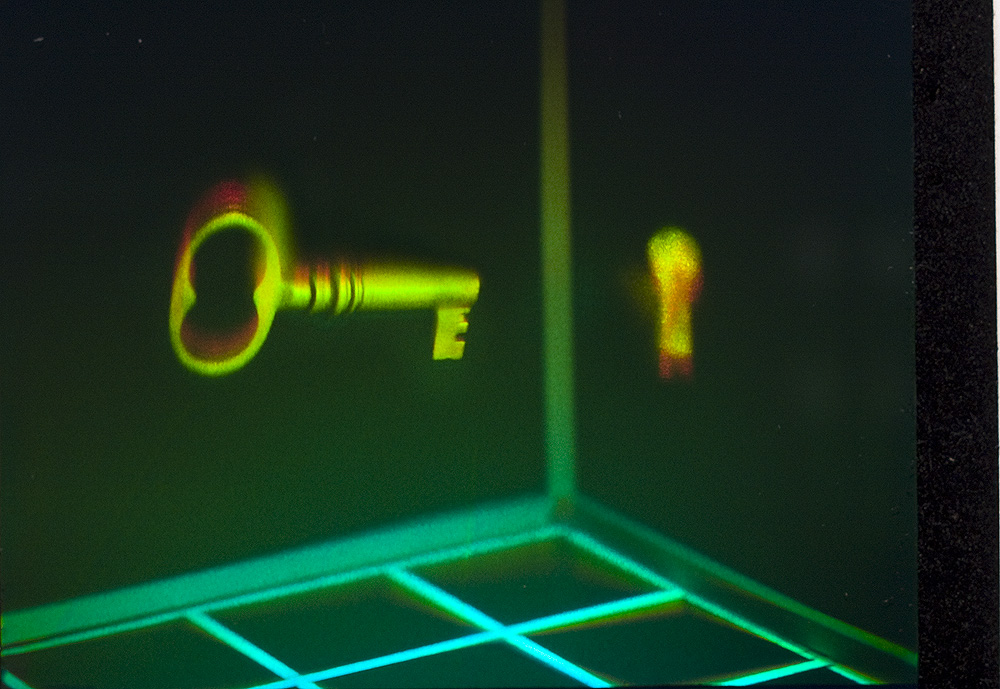
And a single color Wave from his sandbox.

A political statement from Peter Miller, a hand grenade encrusted with diamonds and pearls and gold, Share the Wealth.

A native Midwestern boy transplanted to the West Coast, Bob Hess, shows the fleet returning:
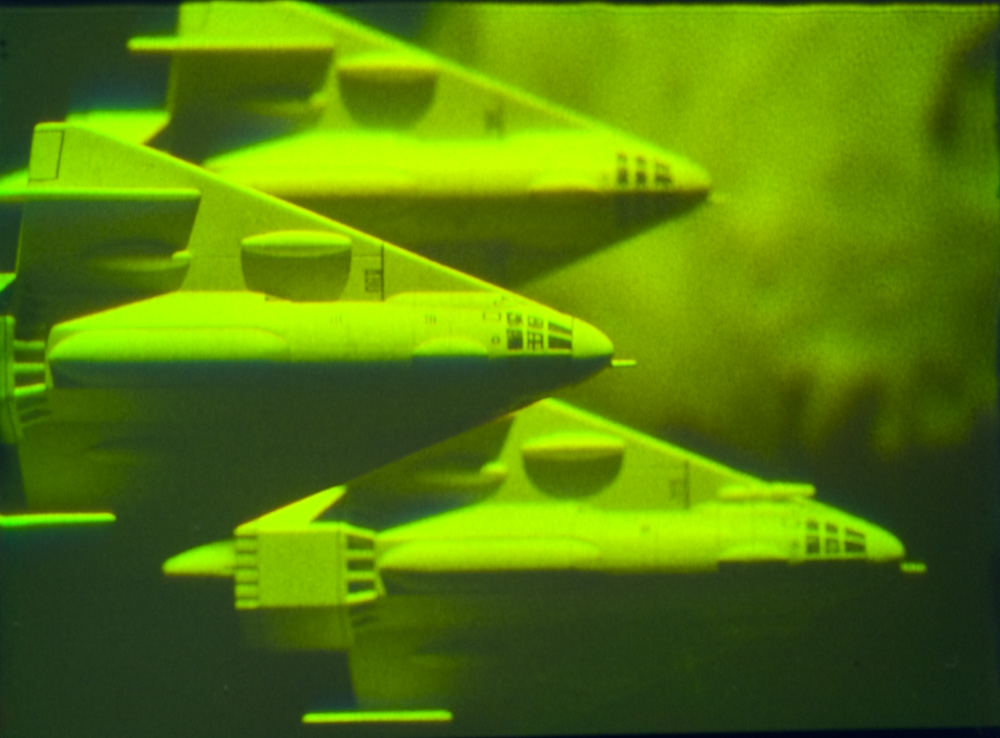
Bob Hess
From Across The Pond
An interesting use of the holographic plate as not a window to the world but part of the art piece, like Lon's Nails above, is from across the pond from Adrian Lines, wherethe hologram viewer is looking over the shoulder of the clown in his big selling Mirror Man hologram, who is pondering his existence in his reflection in the mirror of the holographic plate. A very clever idea, not unlike the duChampian school of thought of Lon's Nails penetrating the holographic plate.
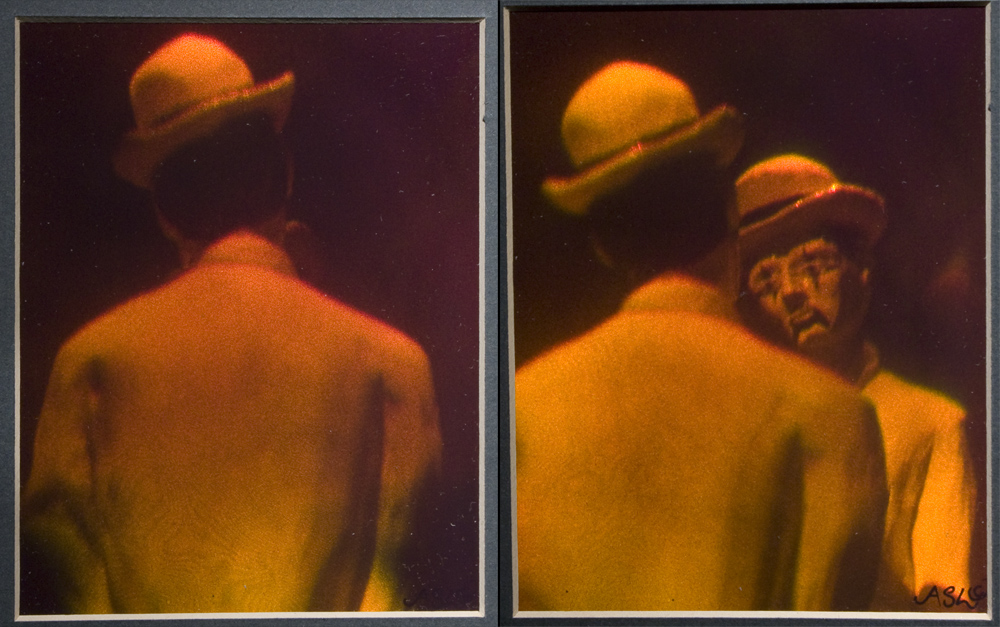
Adrian Lines, Mirror Man, 198?
Genius breeds imitators, and here is something from Gallery 1134 that seems to b a take on the above, except the reflection in the mirror is not of the creature whose shoulder we are looking over.

I am sorry to say I cannot attribute the creation of this piece to anything better than the Holo III lab of Gallery 1134. It was found when I excavated its bowels in 2014-2015 in a box with other 4 by 5's. Was this a stock image to be sold in Loren Billings' Gift Shop? Or an example of student work from the Holography III class? Anyone willing to shed a light on the above, plus the following, please straighten me out at eweslystudio at gmail dot com.
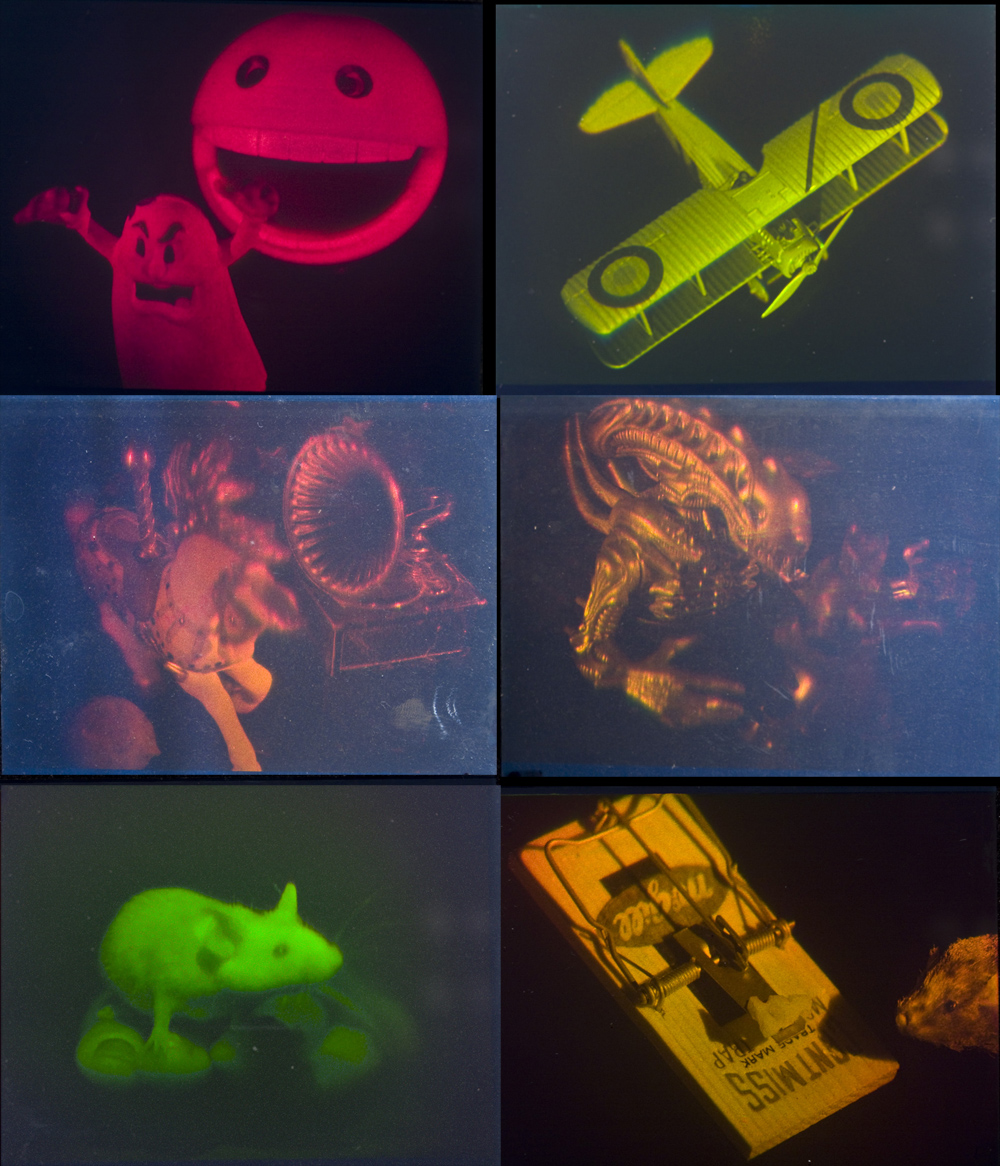
All done at Gallery 1134. Top row, a Pac-Man chasing a Pac-Ghost, must be a classroom project, like the very boring WWI plane. (How come no ground or clouds in the scene?) The middle row has a not very bright image of a horse and a Victrola on the left, which must be an ode to the Victorian age, and a Giger Alien is menacing something on the right.
My guess at who is the star of the bottom row left hologram is the live mouse who was the subject of the final project hologram for the World's First Classes in Display Pulsed Holography with Hans Bjelkhagen, Ph.D. Whose hand is that and where did they get that mouse are a couple of unanswered questions, along with "A green mouse?" But the Orange Mouse at bottom right is probably stuffed, as that model of McGill Mouse Trap is a CANT MISS.
Here's a two channel holo with a message, unfortunately the 2nd channel isn't as bright as the 1st. Was some student holographer trying to send Loren Billings a message about her Virginia Slims?

Not exactly sure if I can name John Hoffmann as the Master Holographer of the Umbrella Drink, but I certainly do know that those green butterflies are one of his more often used test objects in a variety of other formats. He has also done that Beethoven bust in embossed mode, with a different background, and of course his biggest claim to fame is the fact that he used 5 object beams on his best-selling hologram of Chicago's Picasso! (And I have a few for sale if anyone is interested.)
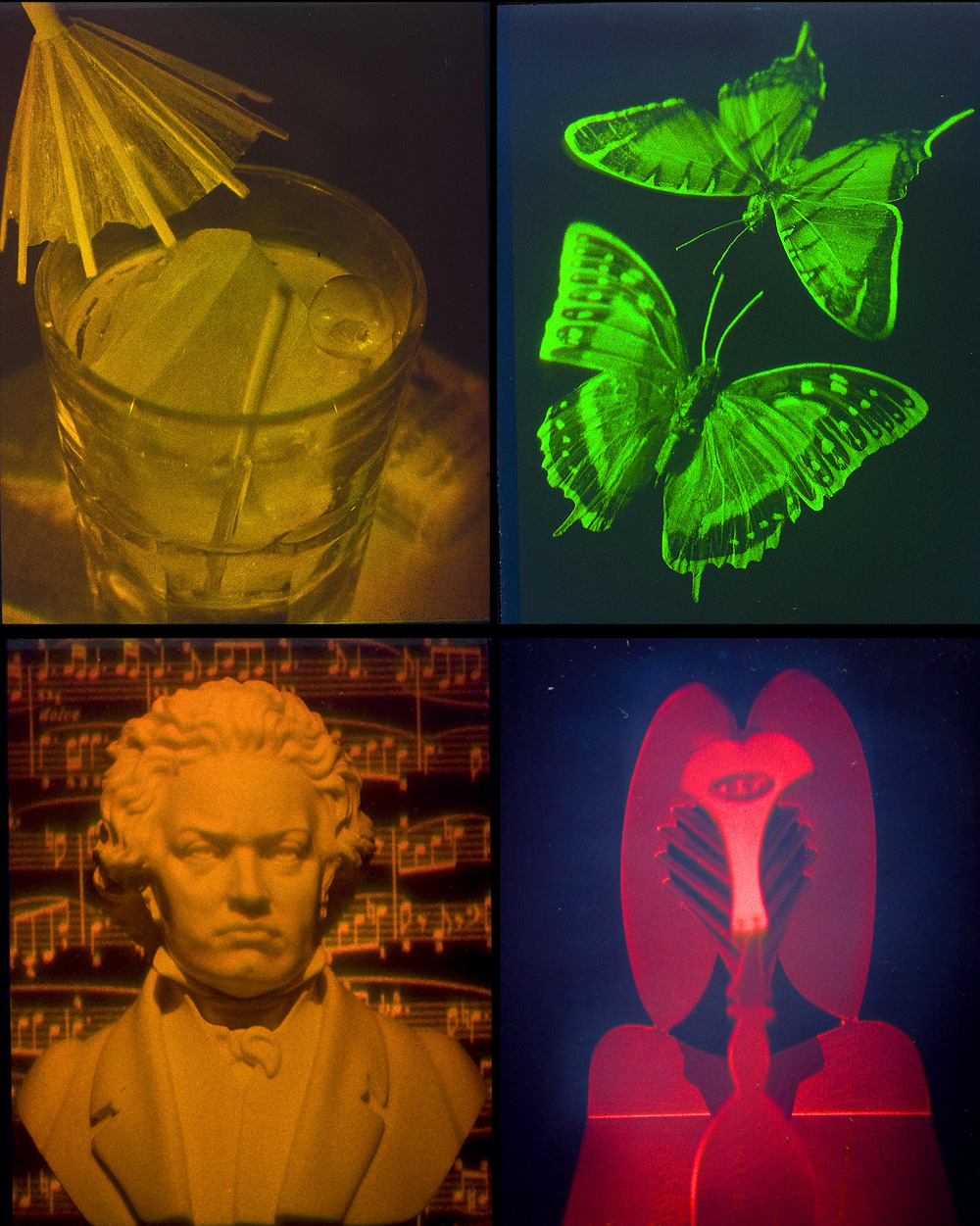
John Hoffmann, 1980's
But here is my favorite 4 by 5 from this holographic atelier. Look at the maniacal attention to detail of the marks added to the eyeballs and the background, which the ant seems to be enjoying, too! Who is this anonymous genius who didn't sign their work?
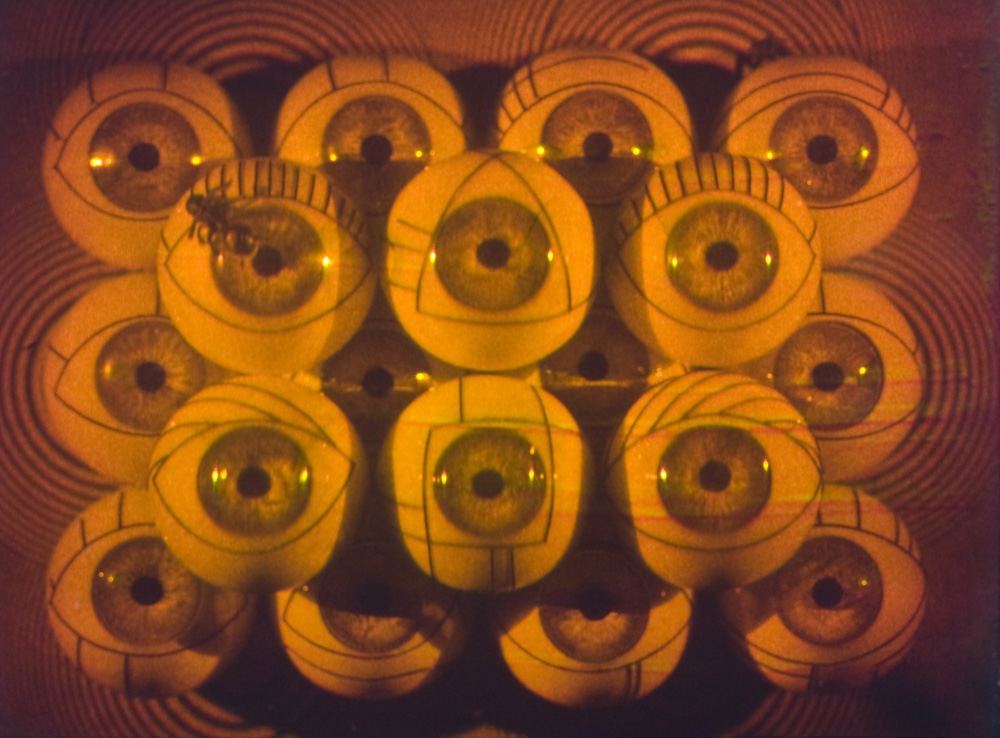
The self-acknowledged master of ultra-realistic, multi-wavelength recording using ultra-fine grained emulsions with highly-diluted developers, Hans Bjelkhagen, also contributed to the 4 X 5 market with these close to true color holograms.
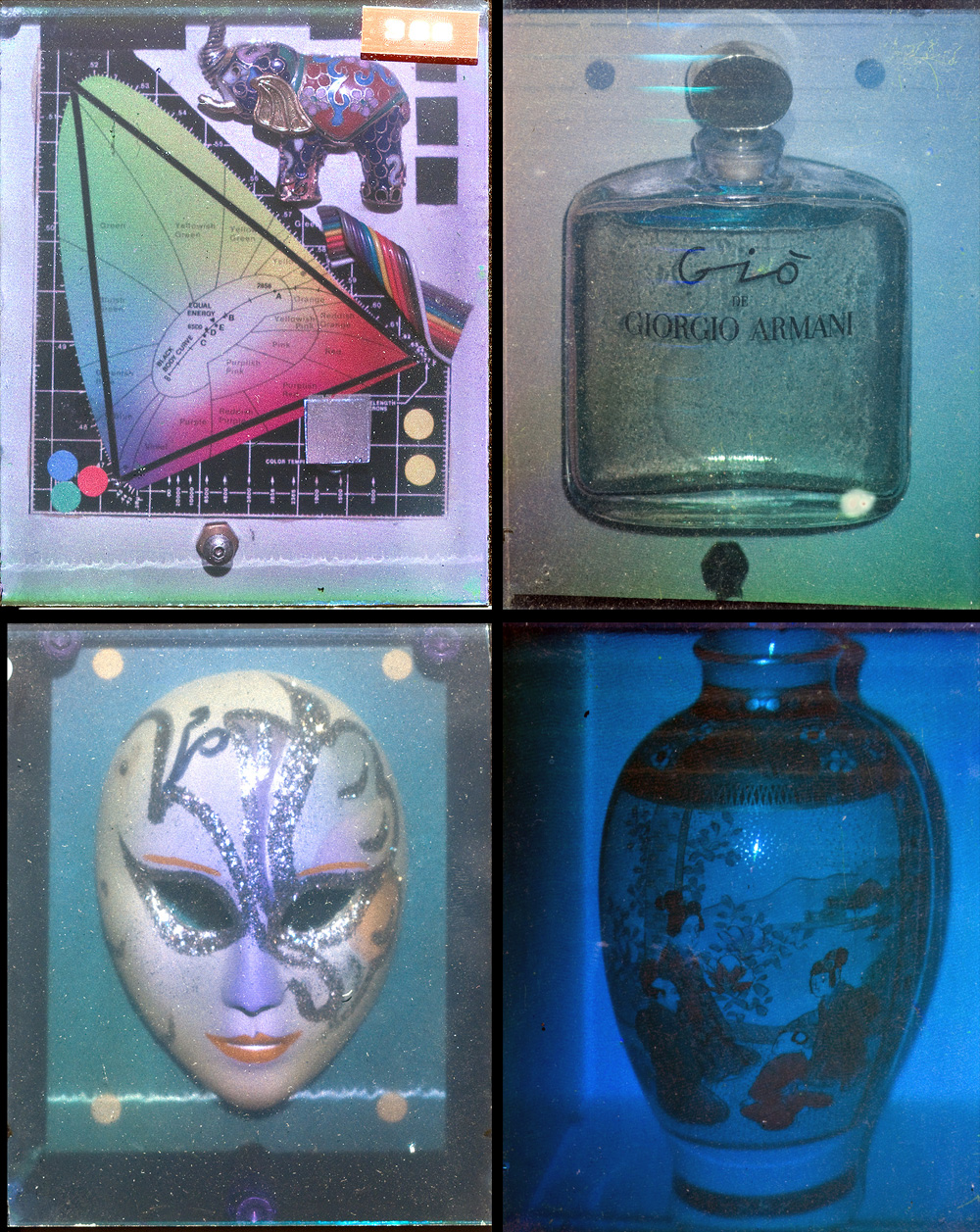
Hans Bjelkhagen, Opto-Clone Prototypes, 1996
And here are some true color holograms from someone all acknowledge to be the master of the medium, Yves Gentet, that you would be proud to display on your wall:
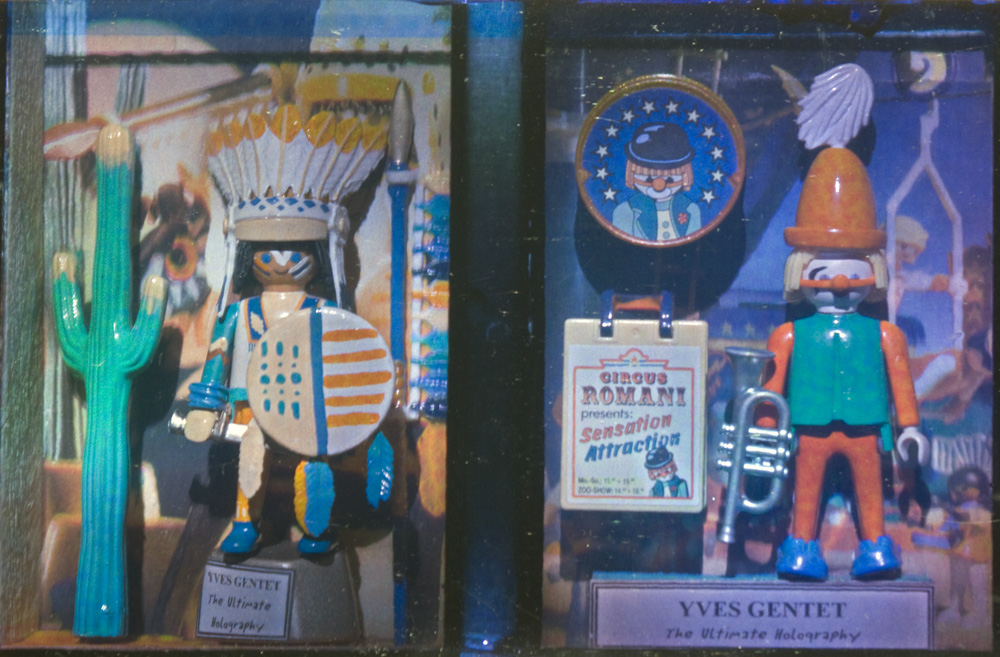
Yves Gentet, Indian, Clown, early 2000's